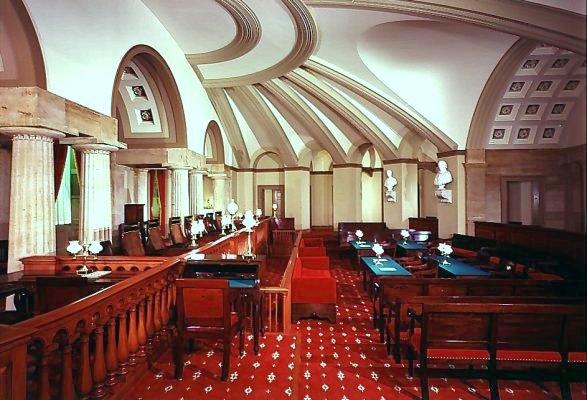
The Old Supreme Court chamber
Implementing the Constitution

The Old Supreme Court chamber
| By 1789, the Constitution was ratified and the new government in operation. That leaves us, however, with the question of how to interpret the period from 1789 through 1801, when the framers were in firm control of the national government and the Constitution was being fleshed out. Should we view this period as the third phase of the constitution-making process? And, if so, what lesson should we draw from it? The reading today is all from the assigned books. |
READINGS:
|
|
Hall, Major Problems, chapter 6 |
|
|
Bailyn, To Begin the World Anew, pp. 131-149. |
|
|
Simon, What Kind of Nation, pp. 27-62, 104-117. |
STUDY QUESTIONS
|
1.) To what extent did the Virginia Resolutions represent a continuation of Anti-Federalist political thought? |
|
2.) What--if anything--does the passage of the Alien and Sedition Acts say about the framers' attitudes toward the Bill of Rights? |
|
3.) What do you consider the most unexpected development in constitutional history between 1789 and 1800? |